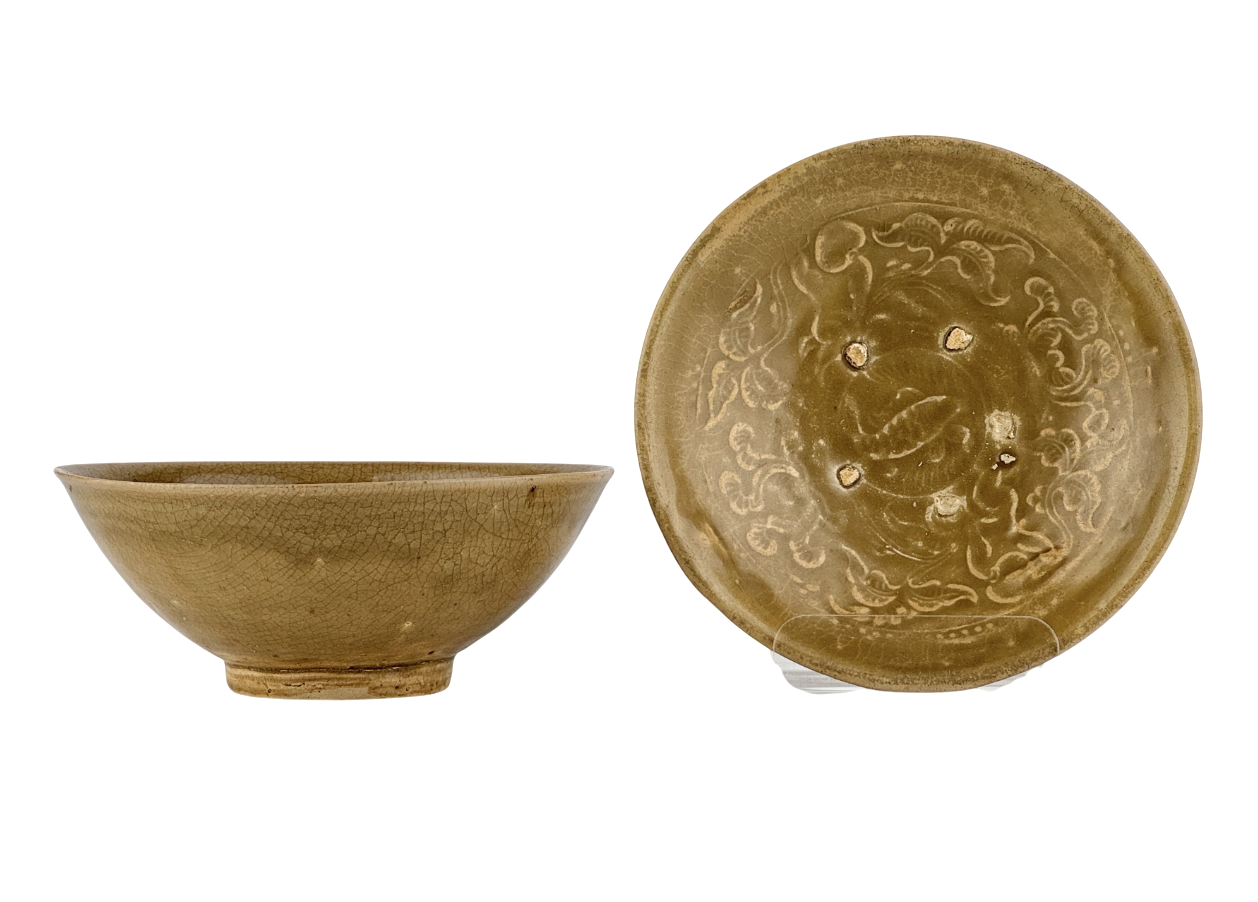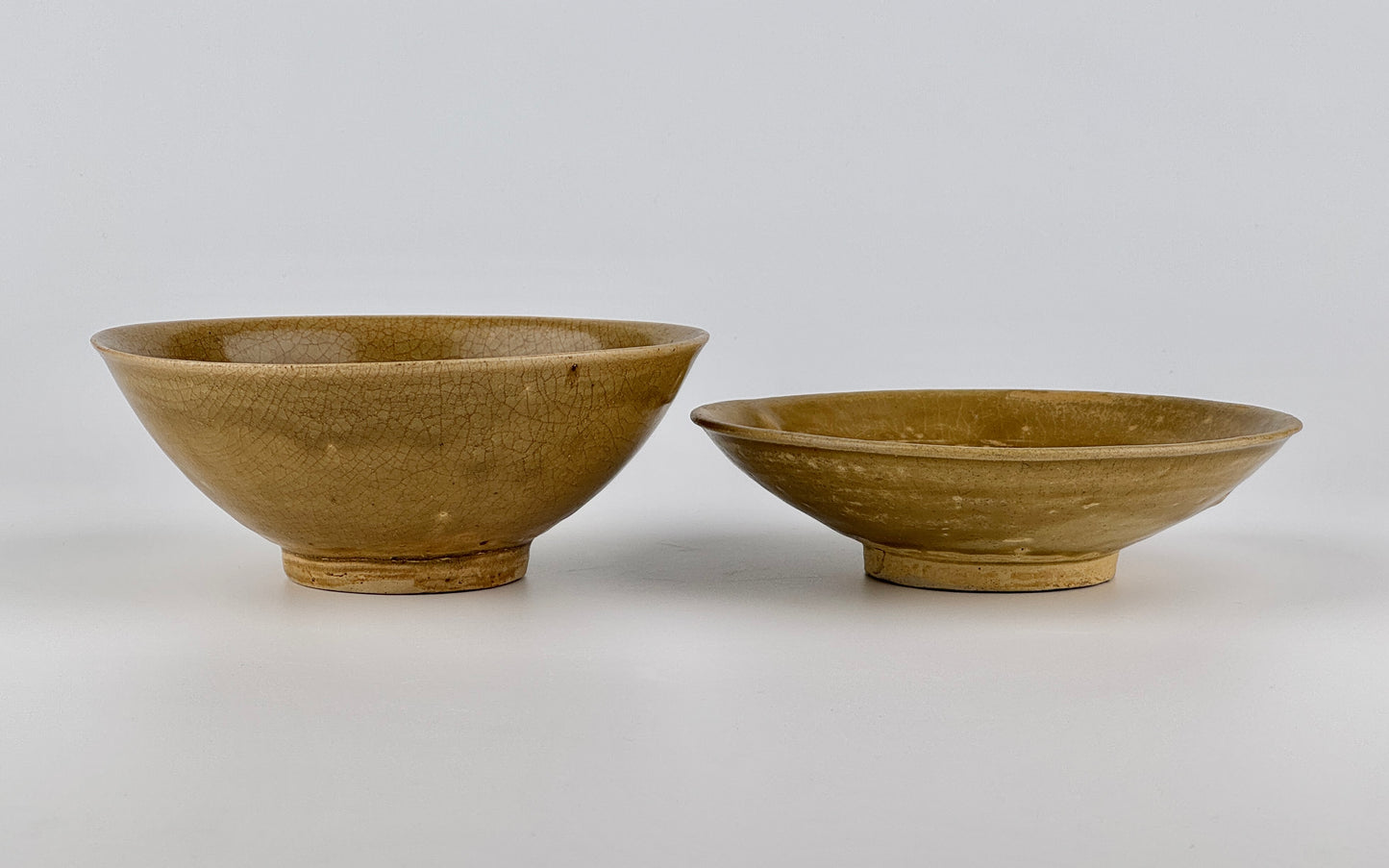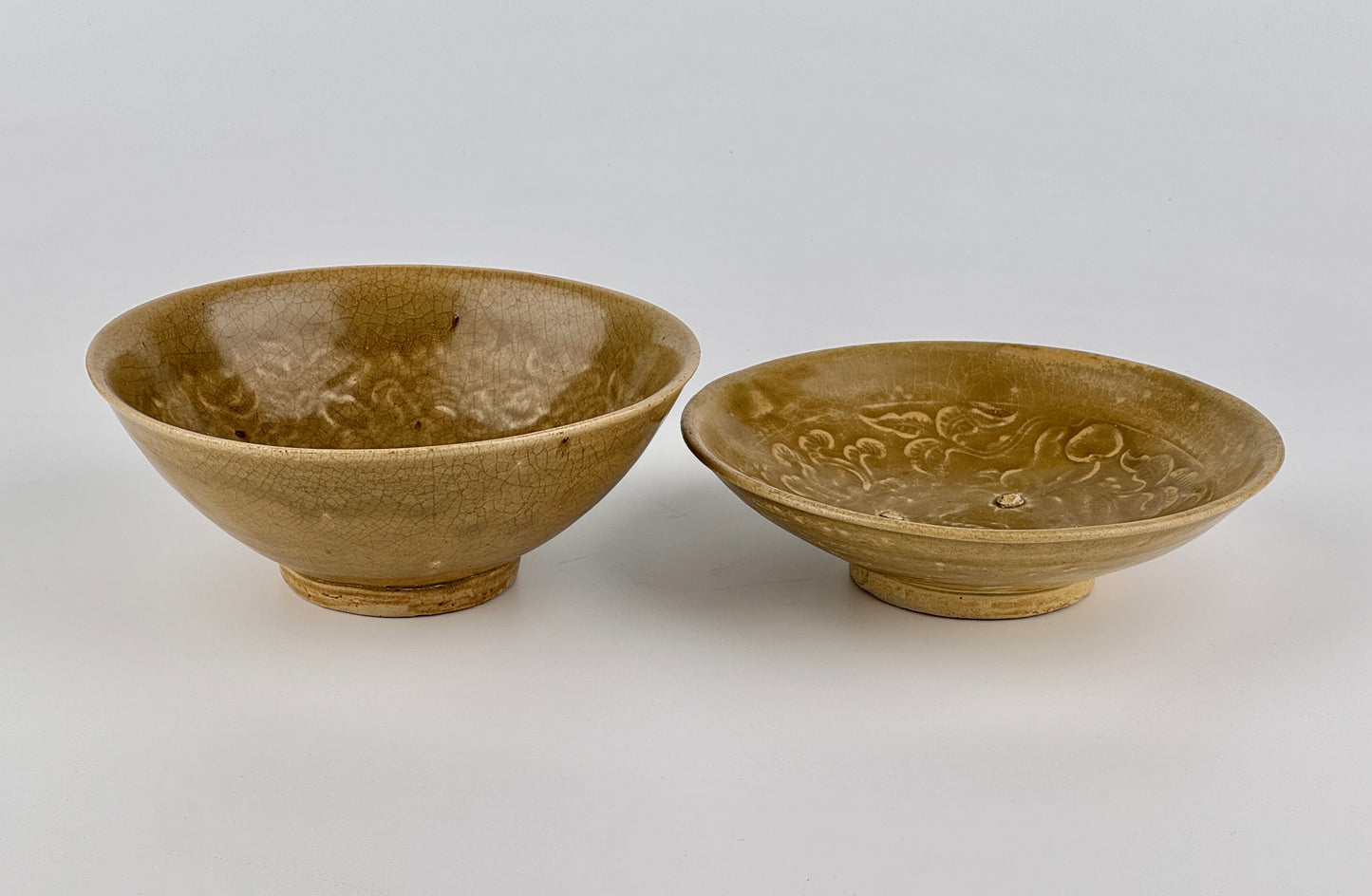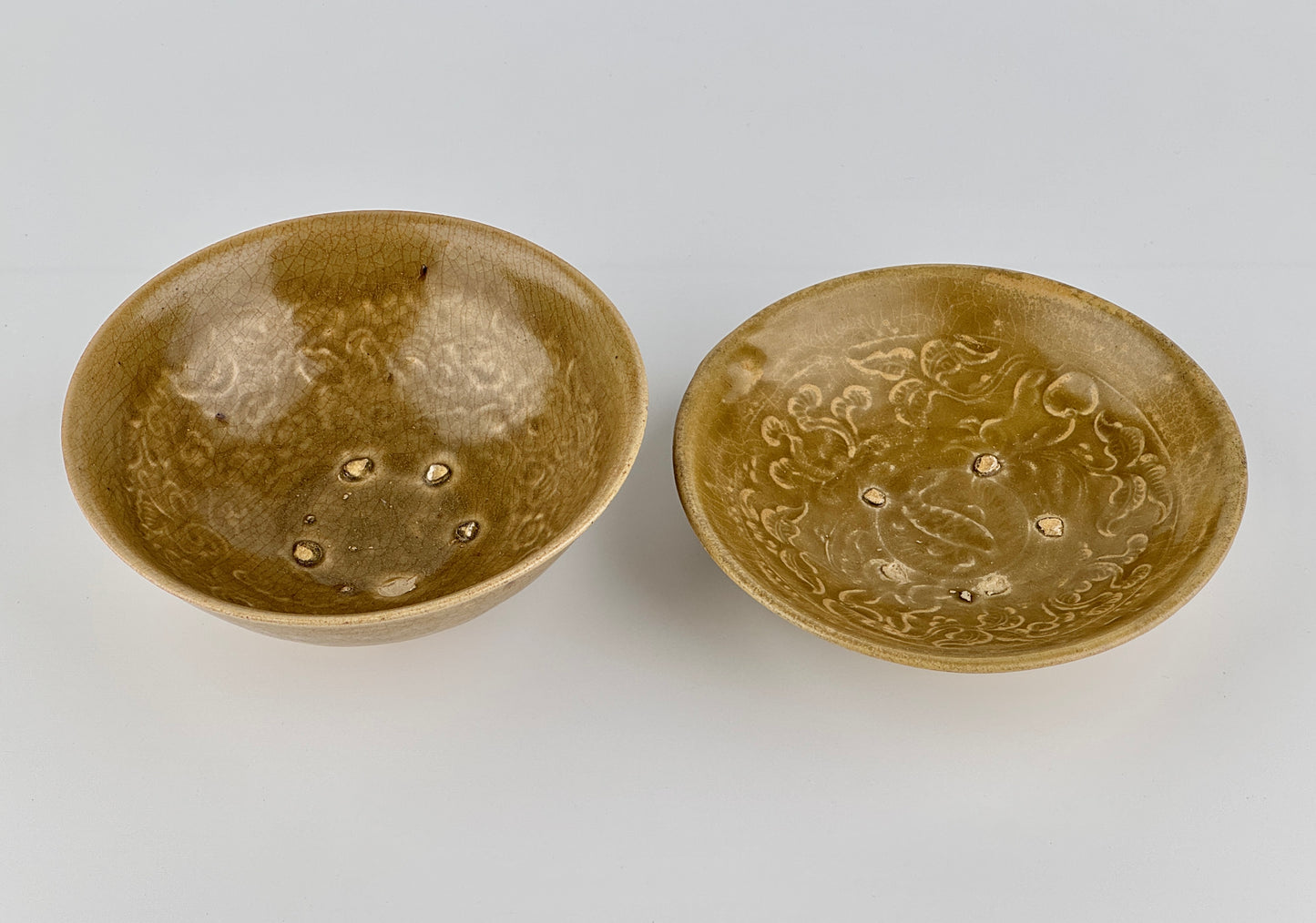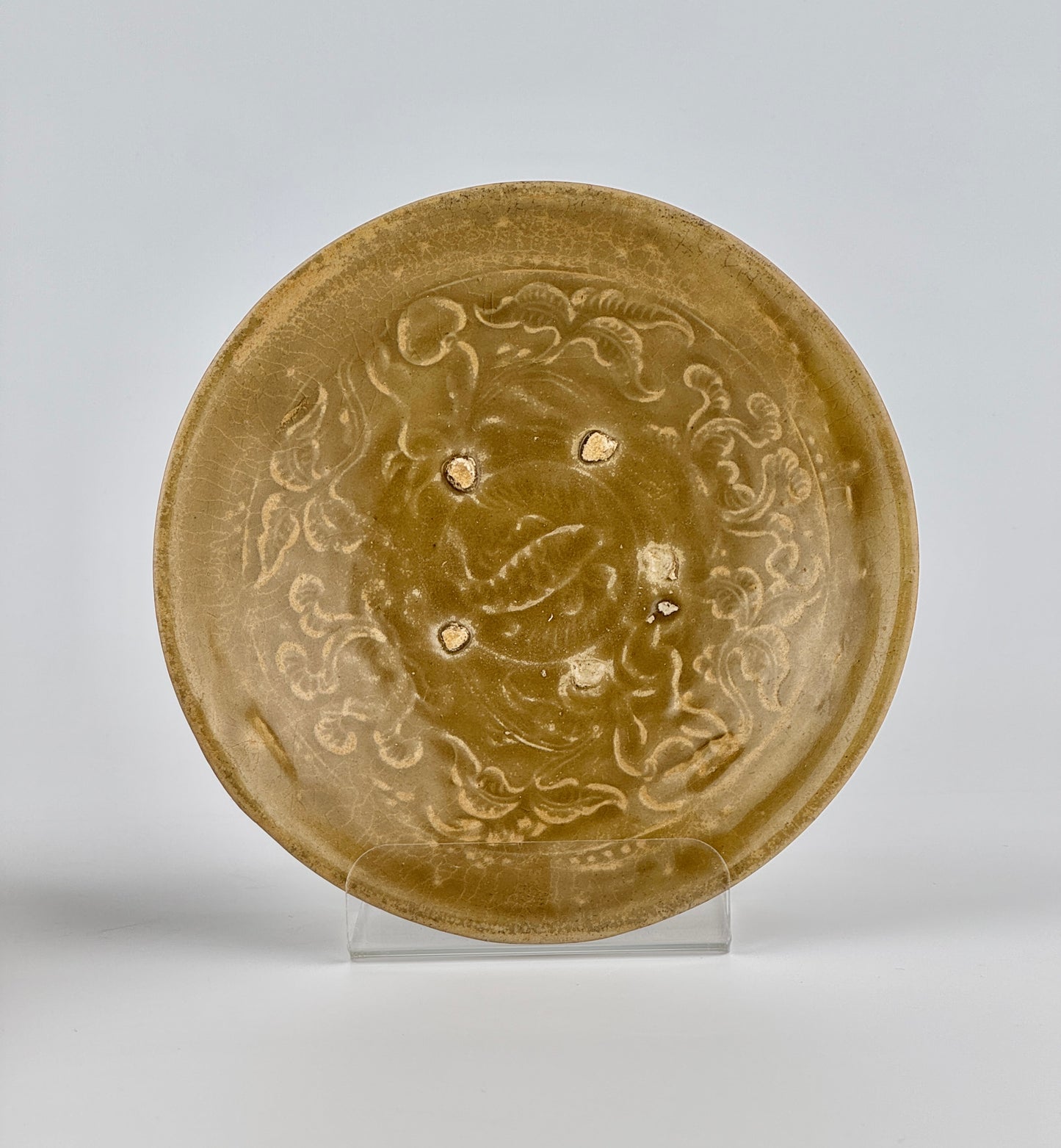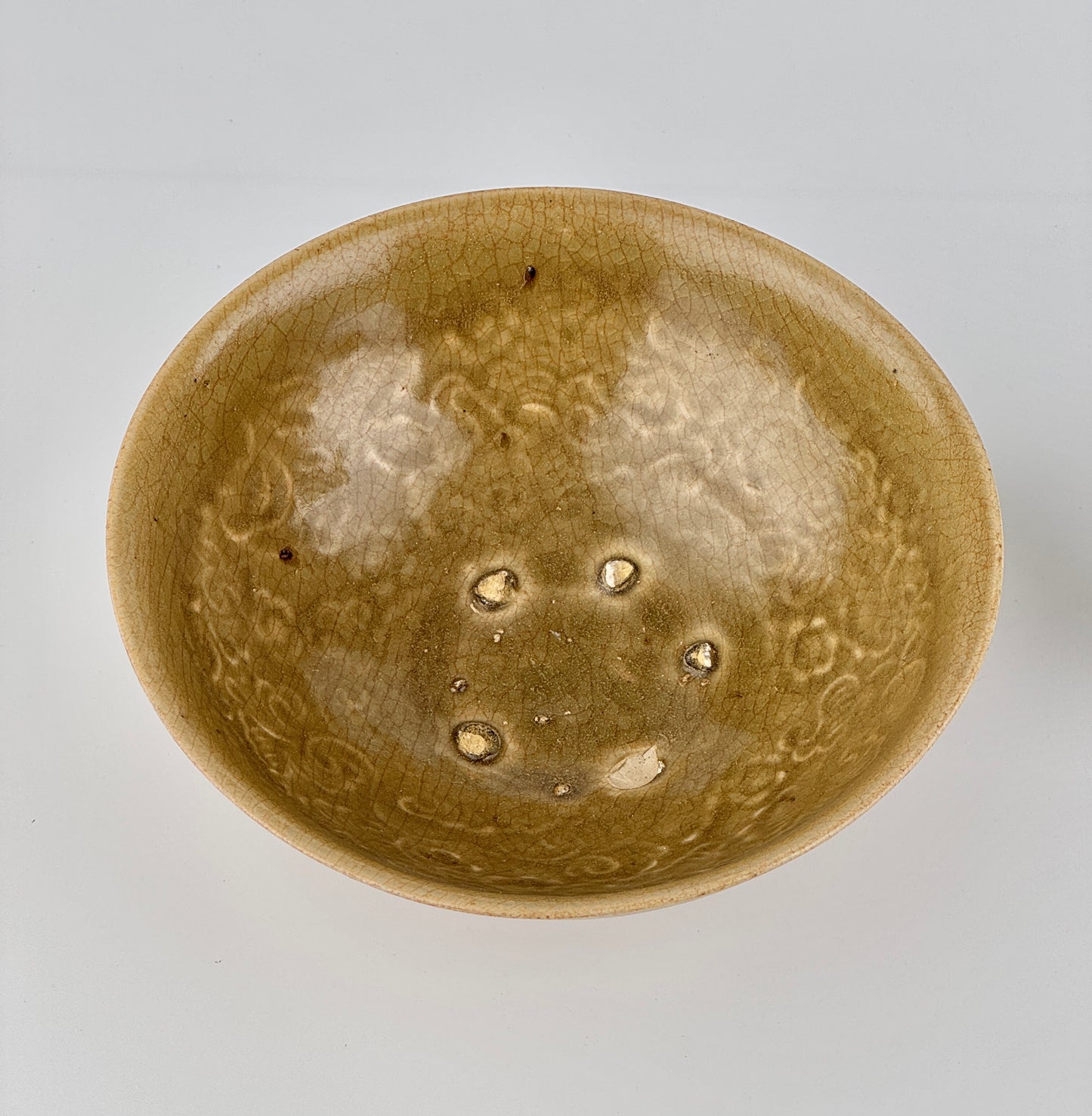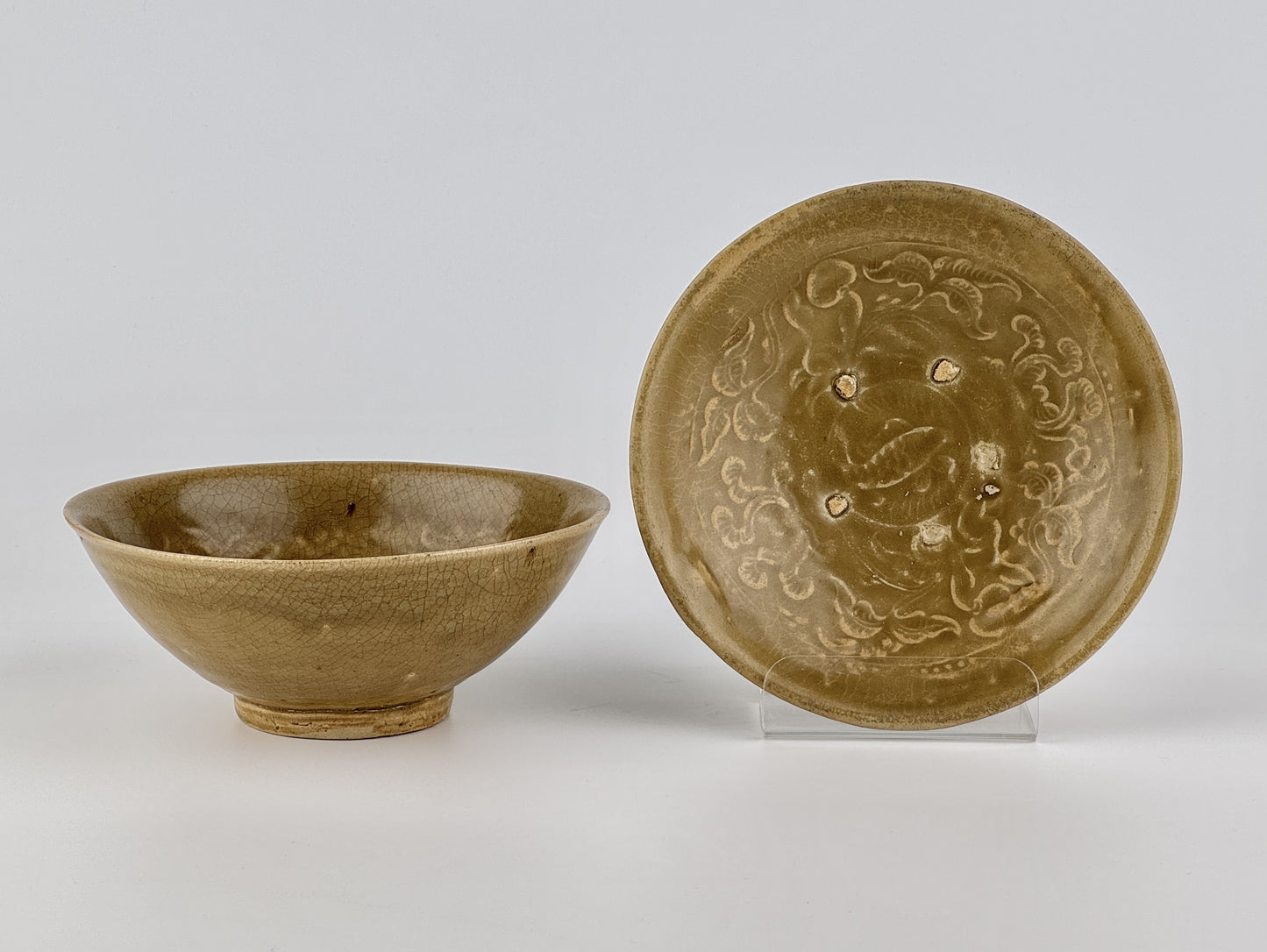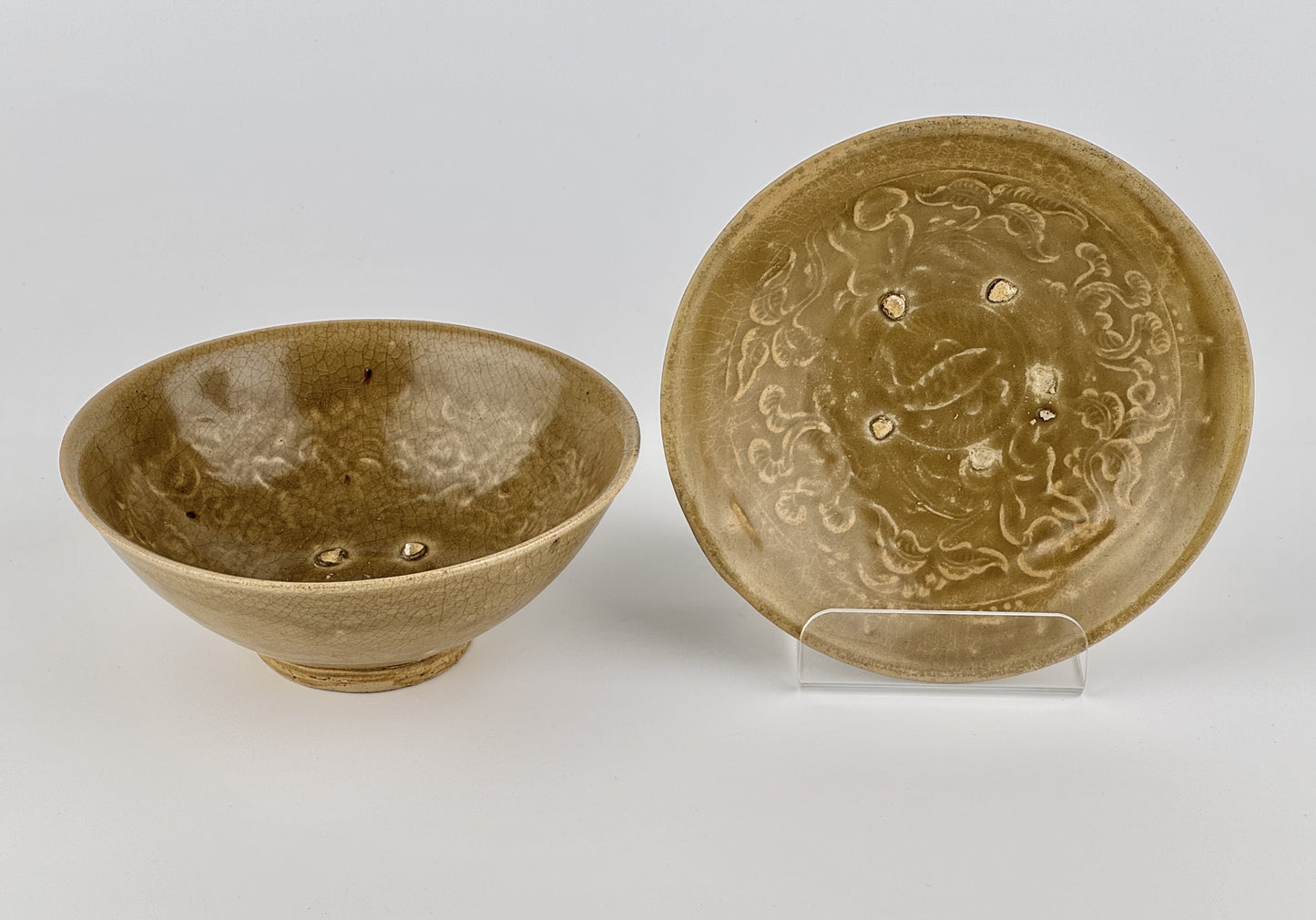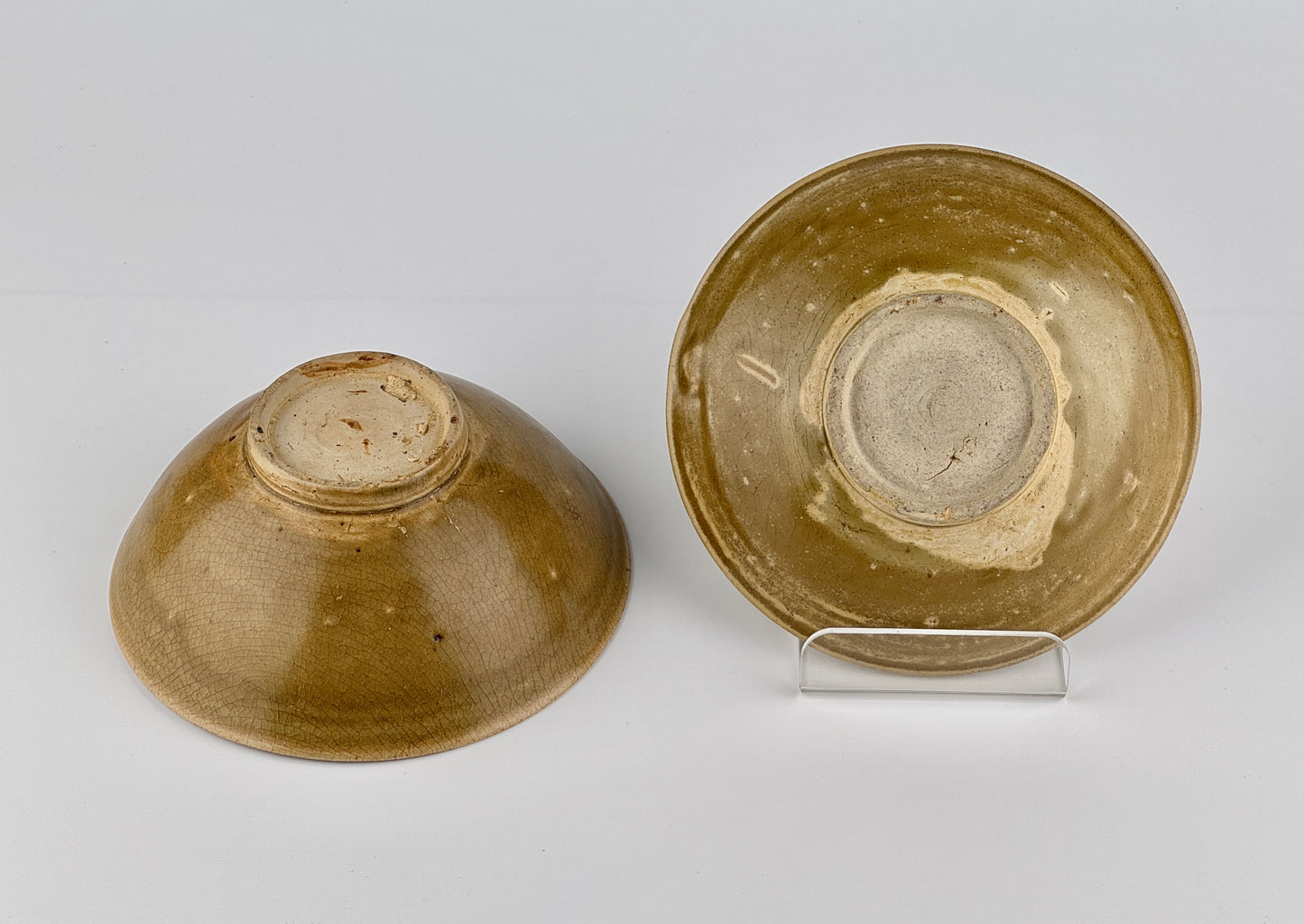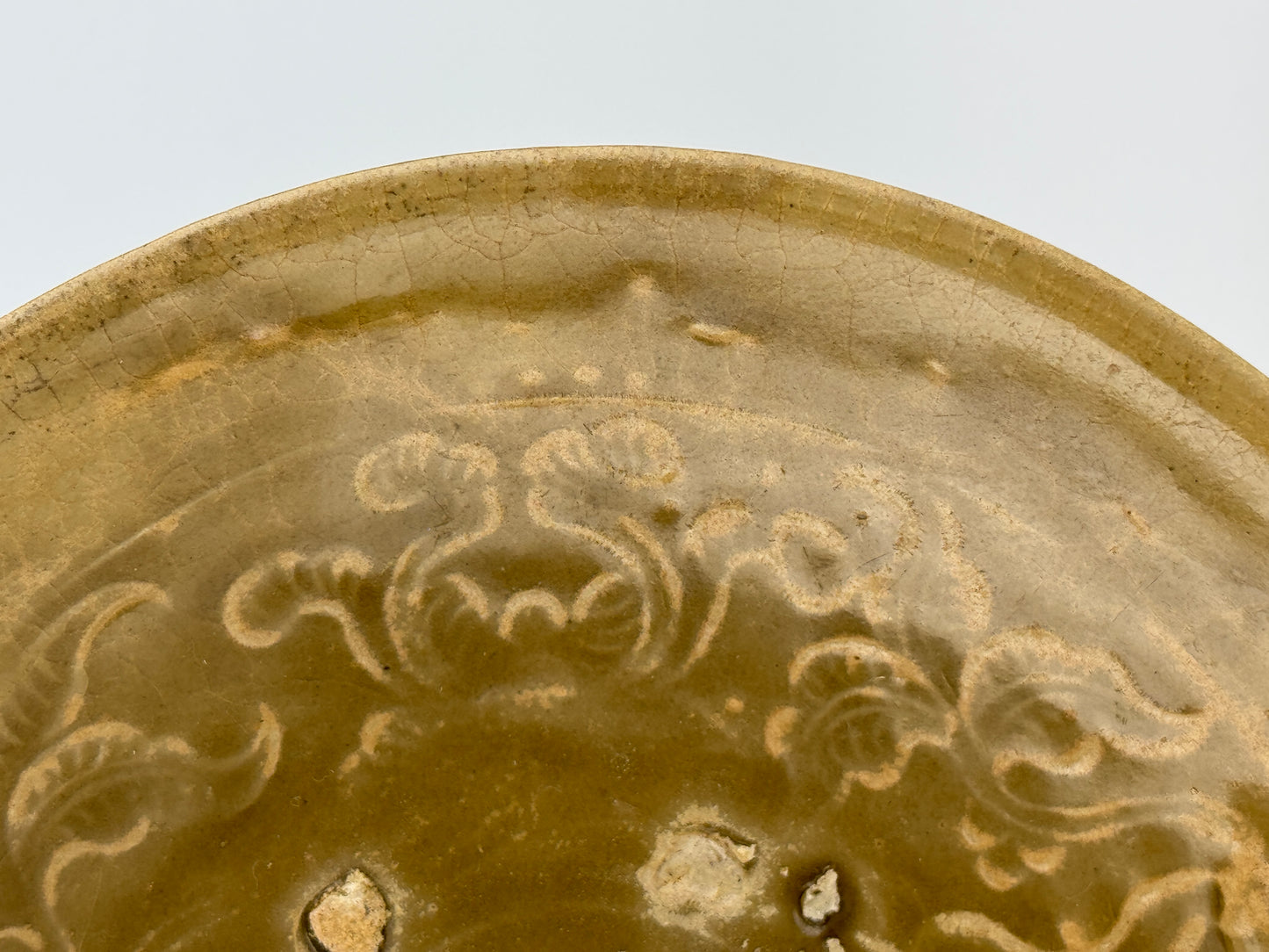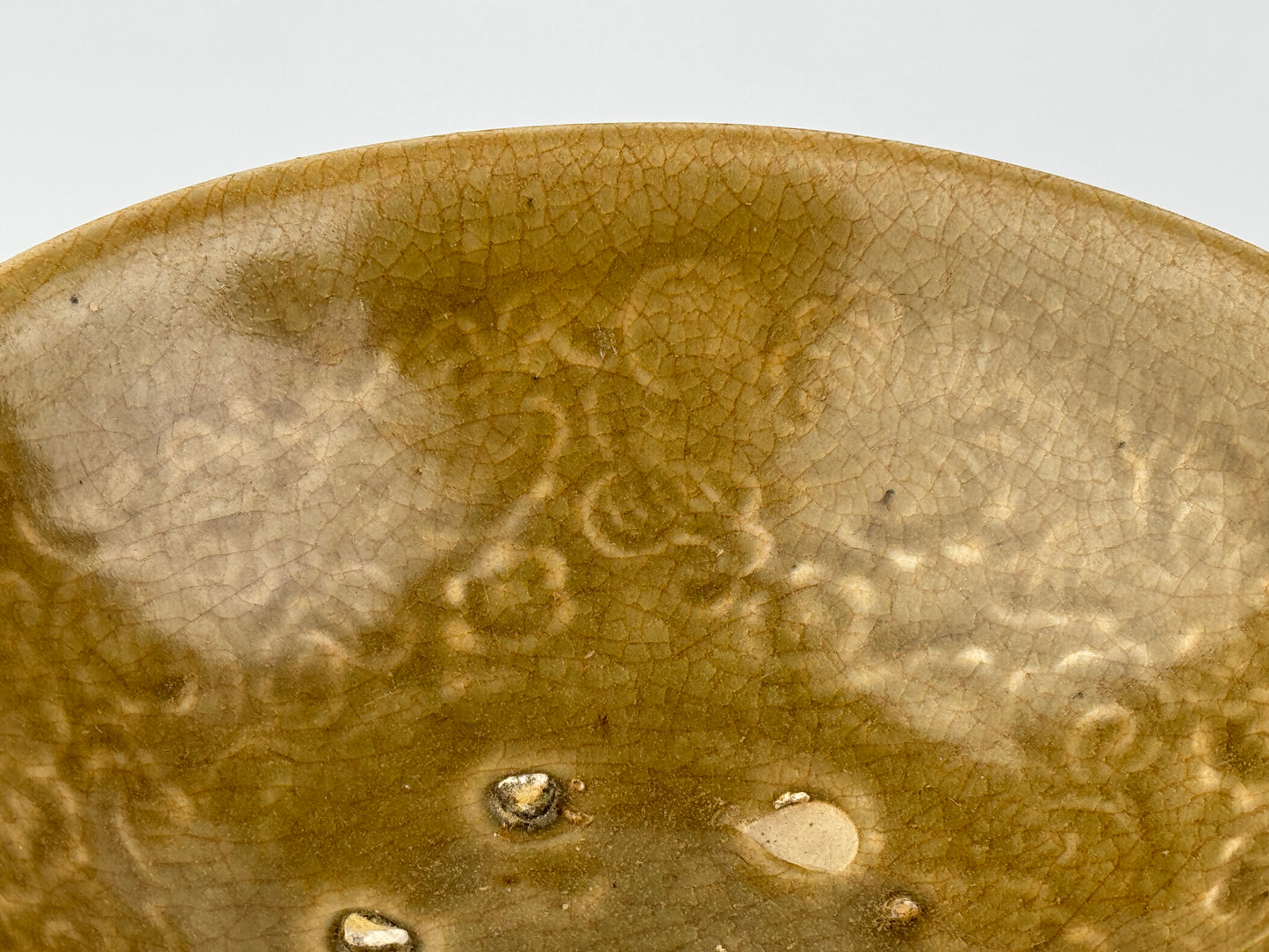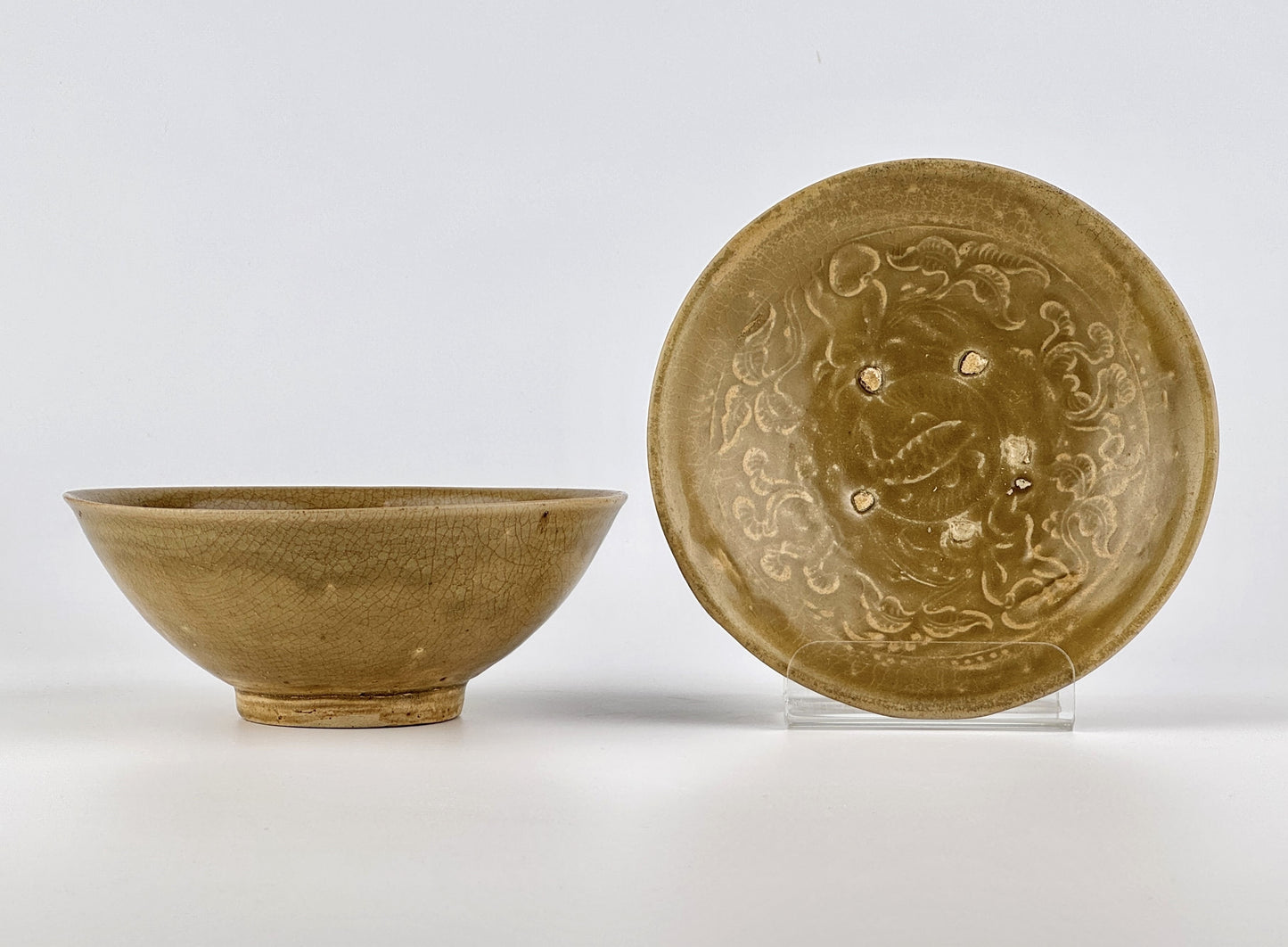AUA Oriental Art
Rare Annamese Stoneware Bowls with olive green glaze, Vietnam, 14-15th century
Rare Annamese Stoneware Bowls with olive green glaze, Vietnam, 14-15th century
Couldn't load pickup availability
These Vietnamese stoneware bowls have shallow, wide, saucer-like form, crafted from pale beige clay with an olive-green glaze. The interior features a delicately molded design of scrolling lotus foliage, subtly revealed beneath the translucent glaze.
A distinctive feature of this piece is the presence of five prominent spur marks not on the bottom but on the interior surface of the bowl. These marks result from the traditional kiln-stacking technique used in Vietnamese ceramics, where multiple bowls were stacked inside the kiln, separated by small clay supports (spurs) to prevent them from sticking together during firing. As a result, these spur marks remain as visible traces of the firing process, offering insight into the production methods of the time. The combination of the antique glaze tone and the delicately molded decorative motifs exemplifies the refined aesthetic sensibility of Vietnamese ceramics of the time.
Dates : 14-15th century Vietnam
Medium : Olive-green glaze
Type : Bowl
Found/Acquired : Southeast Asia , South China Sea, Hoi An Ship
Diameter : 22cm(Diameter) x 5cm(Height)
Reference : Double checked with reference to the original catalogue
Butterfield Treasures Hoi An Hoard Auction Catalogs / San Francisco Butterfields 2000
* Vietnamese trade ceramics
Around the mid-14th century, Vietnam developed its ceramics production technology by producing blue and white porcelain, and began to export it overseas. During this period, China Ming Dynasty implemented a policy of lifting the ban from 1371 to 1657 and restricted foreign trade. This served as a good opportunity in the trade history of Vietnamese ceramics, and ceramic exports boomed from the late 15th to the 16th century, expanding sales channels not only to Southeast Asia but also to Japan, the Middle East, and several European countries.
During 15~16th century, Vietnam's international trade policy became much more liberal than in the past. In northern Vietnam, commerce became more active as markets were formed around ports, riverine ports, and handicraft villages. This led to the emergence of many large commercial centers such as Phố Hiến, Thăng Long and Hội An.
Through this, Vietnam's international trade and economy also grew significantly. In the above commercial area, stores of European merchants from the Netherlands, England, France, and Portugal were opened and operated. Merchants from many countries around the world entered Vietnam and engaged in intermediate trade.
Share
